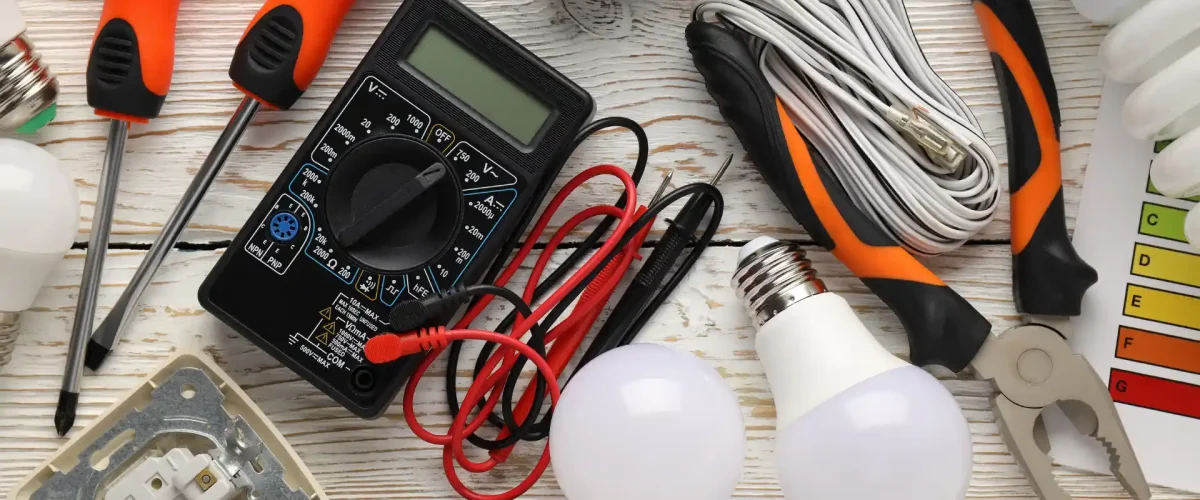In any workplace, safety is a top priority. Electrical hazards pose significant risks, including fires, electric shocks, and operational downtime. Ensuring that electrical systems are safe and reliable is crucial for the well-being of employees and the efficient functioning of businesses. This blog post delves into the best practices employed by commercial electricians to maintain workplace safety, focusing on compliance with Occupational Safety and Health Administration (OSHA) and National Electrical Code (NEC) standards.
Introduction
Electrical hazards in the workplace can lead to devastating consequences, such as fires, electrical shocks, and significant downtime. The role of commercial electricians is pivotal in preventing these risks and ensuring compliance with OSHA and NEC regulations. By implementing effective safety protocols, they help create a secure work environment.
Safety Practice 1: Comprehensive Risk Assessments
Conducting thorough risk assessments is the first step in identifying potential electrical hazards in the workplace.
Thermal Imaging, Load Testing, and Arc Flash Studies
Thermal imaging is used to detect hotspots that may indicate overloaded circuits or faulty connections. Load testing ensures that electrical systems can handle their current loads safely. Arc flash studies assess the risk of arc flash incidents, which can cause burns and other injuries.
Identifying Overloaded Circuits, Faulty Wiring, or Outdated Panels
Risk assessments help identify overloaded circuits, faulty wiring, or outdated panels that could pose safety hazards. Addressing these issues promptly prevents potential accidents and system failures.
Safety Practice 2: Proper Installation of Industrial-Grade Equipment
Using industrial-grade equipment and ensuring proper installation is crucial for workplace safety.
Heavy-Duty Wiring, Explosion-Proof Fixtures, and Surge Protection
Commercial electricians install heavy-duty wiring and explosion-proof fixtures in environments prone to hazardous conditions. Surge protection devices safeguard equipment from power surges and prevent damage.
Case Study: Installing GFCI Outlets in Wet Environments
In wet environments like restaurants and factories, installing Ground Fault Circuit Interrupter (GFCI) outlets is essential. GFCIs protect against electrical shocks by interrupting the circuit if a ground fault is detected.
Safety Practice 3: Employee Training and Emergency Protocols
Training employees to recognize electrical hazards and follow emergency protocols is vital for safety.
Lockout/Tagout (LOTO) Procedures for Maintenance
Lockout/tagout (LOTO) procedures ensure that electrical equipment is de-energized before maintenance work begins. This prevents accidental energization and protects workers from electrical hazards.
Training Staff to Recognize Hazards
Educating employees to identify hazards such as exposed wires or overheating equipment empowers them to take preventative action and report issues promptly.
Safety Practice 4: Routine Maintenance and Inspections
Regular maintenance and inspections are key to maintaining a safe electrical system.
Scheduling Infrared Inspections and Panel Reviews
Infrared inspections detect potential issues by identifying abnormal heat patterns. Regular panel reviews ensure that components are functioning correctly and safely.
Addressing Wear-and-Tear in High-Traffic Facilities
In high-traffic facilities like hospitals and warehouses, addressing wear-and-tear promptly prevents equipment failure and maintains safety standards.
Safety Practice 5: Compliance with Local Codes and Standards
Staying up-to-date with local codes and industry standards is essential for compliance and safety.
Updates to NEC 2023, OSHA Regulations, and Industry-Specific Rules
Commercial electricians ensure that electrical installations comply with the latest NEC updates, OSHA regulations, and any industry-specific rules that apply.
Permitting and Documentation for Audits
Proper documentation of installations and maintenance work is crucial for audits and ensures compliance with regulatory requirements.
Conclusion
Proactive electrical safety measures help prevent accidents, reduce legal liabilities, and ensure a safe working environment. By conducting comprehensive risk assessments, installing industrial-grade equipment properly, training employees, performing routine maintenance, and staying compliant with codes and standards, commercial electricians play a vital role in workplace safety.
To safeguard your workplace from electrical hazards, schedule a safety audit with a certified commercial electrician today. Ensure your business remains compliant and secure for your employees and operations!


